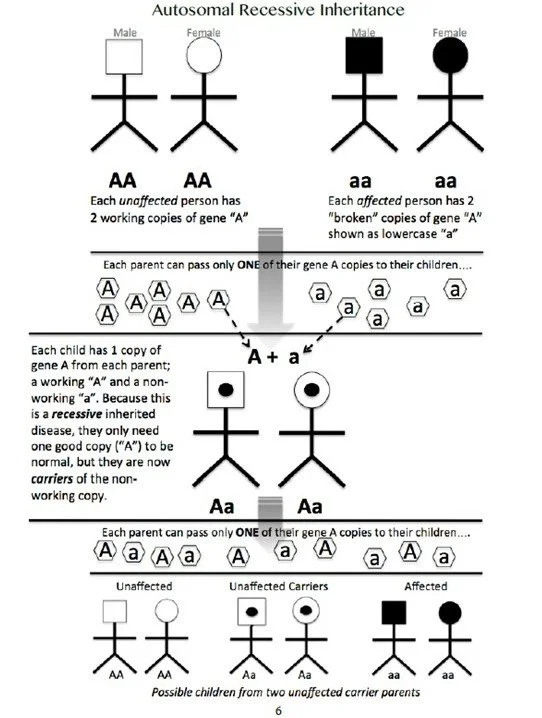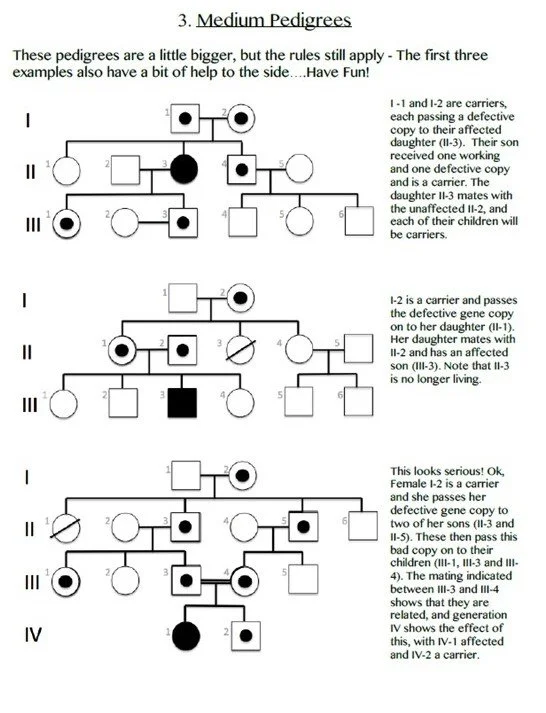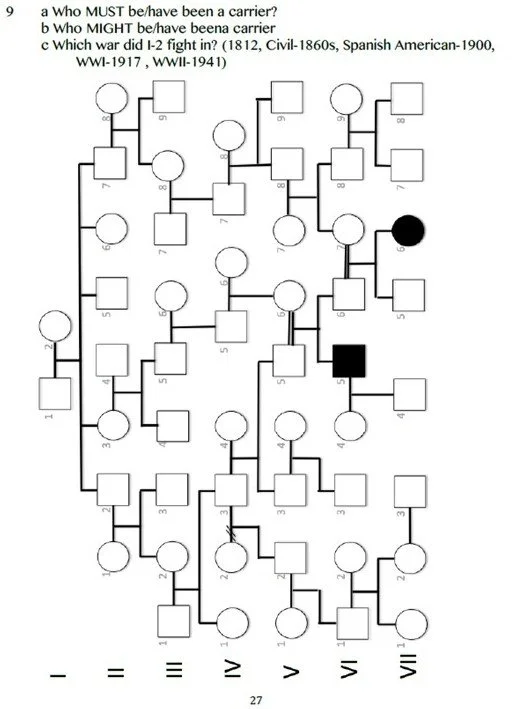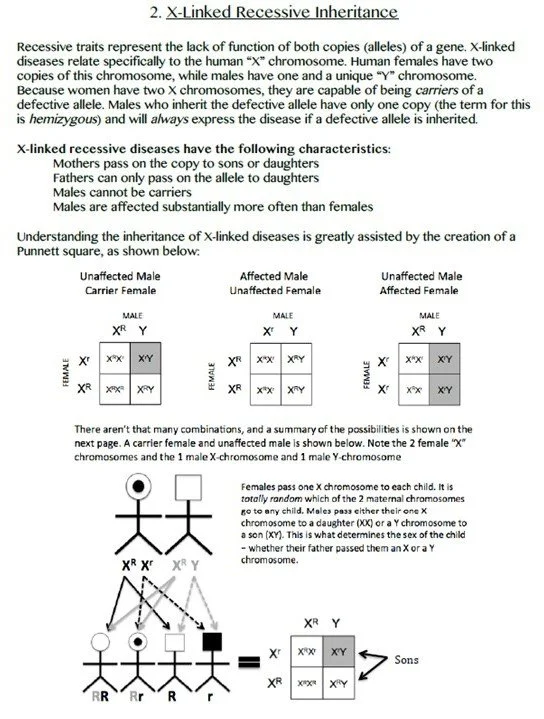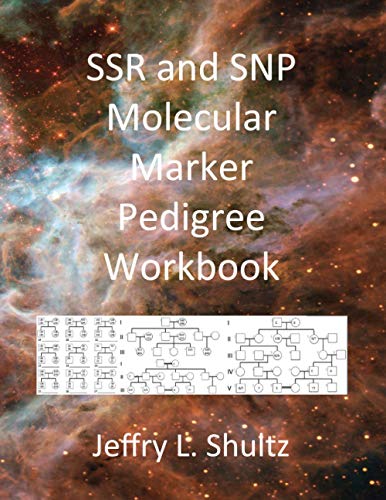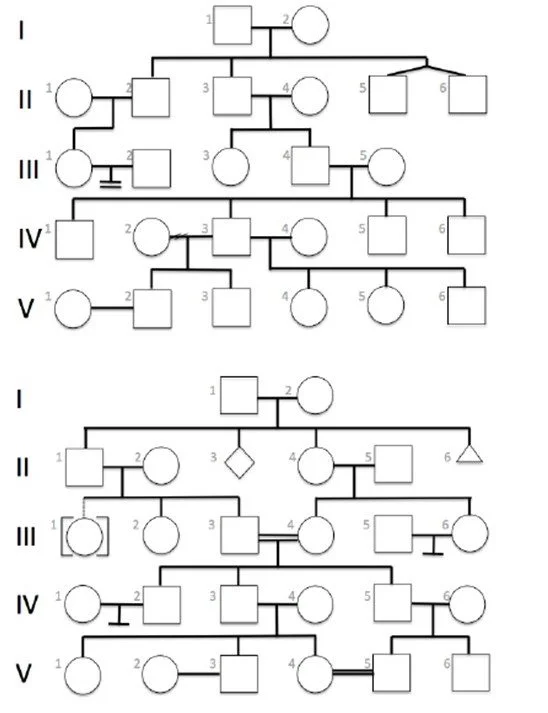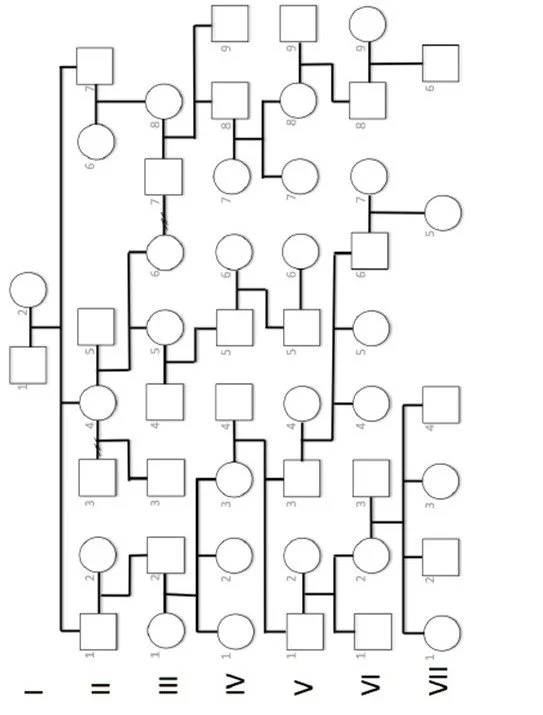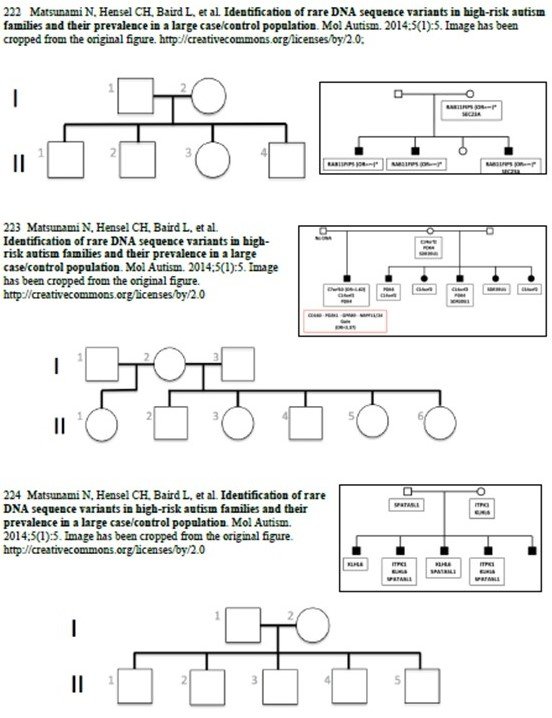Choose from several workbooks to learn/teach inheritance using pedigrees
A brief overview of autosomal inheritance is included. This title includes over 90 solved pedigrees; 60 small, 27 medium, 10 large and 7 scientific. Start learning inheritance with small pedigrees, then move up to medium-sized pedigrees once you have mastered the small ones. Finish with large pedigrees and with examples from scientific literature
X-Linked, Y-Linked and mitochondrial inheritance each have a brief overview (X-Linked overview shown below). There are a total of 66 small, 32 medium and 17 large pedigree problems. Start learning inheritance with small pedigrees. Move up to medium-sized pedigrees once you have mastered the small ones. Finish with large pedigrees and with examples from scientific literature. All pedigrees are included in the answer key.
If you are trying to get a handle on simple sequence repeat (SSR) or single nucleotide polymorphism (SNP) inheritance, this is the perfect book for you. Each section has an introduction to learn the basics, then you start solving simple to complex problems. There are a total of 60 small, 17 medium and 11 large pedigree problems. The level of information presented is what you need. If you master this material as a High-School Freshman or as a Graduate Student, you have mastered this material at a level that allows you to do science.
Ideas for using this book to teach/learn inheritance. 1) Mark an individual(s) as a carrier or affected, then ask whether the inheritance pattern can be autosomal/X-linked and recessive/dominant. 2) Starting with a blank pedigree, fill in an individual as affected or as a carrier, then determine the status of other members of the pedigree based on autosomal dominant, autosomal recessive, X-linked recessive or X-linked dominant inheritance. 3) Identify the genetic conditions represented in the pedigree (twins, consanguineous matings, terminated relationships, adoptions, etc.). 4) Using the published pedigrees, have students indicate the underlying genotype based on the publication (they will have to find in the paper)


